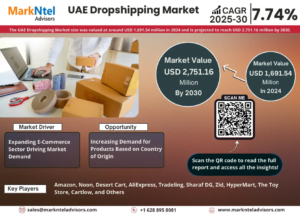Polymethyl methacrylate (PMMA) extrusion is a significant component in industries requiring transparency, weather resistance, and durability, such as automotive, construction, and electronics. Known commonly as acrylic, PMMA is valued for its versatility, strength, and optical clarity, which makes it ideal for applications like protective screens, display panels, and lighting fixtures. This report provides a comprehensive price forecast for PMMA extrusion, analyzing the market dynamics, demand-supply factors, and future outlook.
Forecast Report
In recent years, the PMMA extrusion market has seen fluctuations in pricing due to supply chain constraints, changes in raw material costs, and shifting demand patterns across various industries. With increased emphasis on sustainable and lightweight materials in sectors like automotive and electronics, PMMA demand is projected to grow steadily over the next decade. In our forecast, the PMMA extrusion market is expected to maintain a moderate growth rate, driven by technological advancements and applications in emerging industries, though specific regional factors and industry-specific disruptions may impact overall pricing.
Request a free sample copy in PDF: https://www.expertmarketresearch.com/price-forecast/pmma-extrusion-price-forecast/requestsample
Market Dynamics
1. Rising Demand from Automotive and Electronics Sectors: The automotive and electronics industries are major consumers of PMMA due to its lightweight and high-durability characteristics. Automotive applications, in particular, are driving the need for high-performance PMMA to reduce vehicle weight, improving fuel efficiency.
2. Shifting Raw Material Costs: The price of PMMA extrusion is directly affected by fluctuations in raw material costs, particularly methyl methacrylate (MMA). Any disruptions in the MMA supply chain or increases in production costs can significantly impact PMMA extrusion pricing.
3. Technological Advancements: Innovations in PMMA manufacturing are creating more efficient production methods, potentially lowering costs.
4. Environmental Regulations: As governments enforce stricter environmental policies, PMMA producers are increasingly adopting sustainable practices, which may introduce additional costs in the short term but are expected to drive long-term industry resilience.
Demand-Supply Analysis
- Growing Demand Across Sectors: PMMA extrusion has applications across multiple industries, including construction, automotive, medical devices, and electronics. The diversity of end-use industries helps stabilize demand, even if some sectors experience downturns.
- Supply Chain Constraints: Recent global events, including the COVID-19 pandemic and geopolitical tensions, have disrupted the supply chain for PMMA raw materials. This has led to short-term supply shortages, impacting production capacity and raising prices.
- Capacity Expansions: To meet rising demand, many PMMA producers have expanded their production facilities. For example, significant investments in Asia-Pacific have increased regional supply. However, rapid expansion can sometimes lead to oversupply, creating downward pressure on prices.
- Import-Export Dynamics: Trade policies and tariffs on raw materials and finished PMMA products affect the price stability of the extrusion market. Countries with limited domestic production rely heavily on imports, making them vulnerable to international pricing fluctuations.
Extensive Forecast
Based on current market trends and projected demand, the PMMA extrusion market is likely to experience gradual price increases in the next five years. However, the degree of growth may vary by region, with Asia-Pacific expected to lead due to rapid industrialization and high consumption in sectors like electronics and automotive.
Short-Term Forecast: In the short term, PMMA prices are likely to remain volatile due to raw material cost fluctuations and supply chain disruptions.
Medium to Long-Term Forecast: In the medium to long term, PMMA extrusion prices may stabilize as supply chains recover, and more sustainable manufacturing practices take hold.
Detailed Insights
The PMMA extrusion market holds substantial growth potential, but it also faces specific challenges. Below are key insights into market trends and growth drivers:
- Automotive Lightweighting Trends: As vehicle manufacturers strive for fuel efficiency, they are shifting toward lightweight materials like PMMA.
- Construction Sector Growth: PMMA is widely used in construction for applications requiring durability, weather resistance, and transparency. In high-rise buildings, shopping malls, and modern architectural designs, PMMA serves as an alternative to glass, providing energy efficiency benefits. The ongoing expansion in the global construction industry is likely to keep demand for PMMA extrusion strong.
- Environmental Impact and Sustainable Manufacturing: Increasing awareness of environmental issues and stricter regulations have put pressure on manufacturers to adopt greener production methods. Bio-based PMMA is emerging as an alternative to traditional PMMA, offering a more sustainable option. Although currently more expensive, as production technologies advance, bio-based PMMA could become more accessible and reduce overall market prices.
Media Contact:
Company Name: Claight Corporation
Contact Person: Endru Smith, Business Consultant
Email: sales@expertmarketresearch.com
Toll Free Number: US +1-415-325-5166 | UK +44-702-402-5790
Address: 30 North Gould Street, Sheridan, WY 82801, USA





More Stories
How Long Does Air Duct Cleaning Take? A Complete Guide
Analysing the UAE Dropshipping Market: Size, Trends, Growth, and Forecast
Debt Protection Services How to Safeguard Your Financial Future